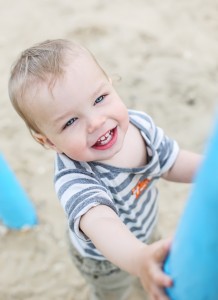Most people take sleep for granted, but for those who are sleep-deprived, the word torture takes on a new meaning.
Sleep is vital for our physical and emotional well being. It is well known that it promotes the secretion of growth hormone as well as restoring brain processes. This enables us to perform subtle cognitive and social tasks as we go about our daily lives.
It may be surprising to note that the very same environmental, behavioural and social factors that may interfere with sleep, can play an important role in ensuring healthy sleep habits from the start.
In daily practice, when one is presented with an “unsettled infant”, or a “badly behaved toddler”, lack of sleep, or plain exhaustion is often not considered, as the practitioner is often too busy looking for a “physical reason” for the childs’ distress.
Physiological factors that affect sleep
There are obviously certain physiological factors to exclude from the outset, and a detailed history from the parent (or caregiver) is necessary. The obvious factors should include the following:
- Illness
- Nutrition
- Digestive disturbances
- Allergies
- Anaemia
- Parasitic infection (worms)
- Candida (thrush):oral/systemic/peri-anal
- Teething
- Nappy rash
- Emotional trauma
Once these factors have been excluded, the area of sensory overload should be investigated.
Sensory integration
The behaviour displayed by an infant or toddler upon exposure to sensory input will differ depending on the manner in which the stimulus is interpreted.
The sensory system functions in order to form a composite picture of what is going on around us. Sensory integration is the critical function of the brain that is responsible for producing this picture.
For most of us, effective sensory integration occurs automatically, unconsciously and without effort. However, for most infants, particularly premature babies, and toddlers with sensory integration difficulties, this process is inefficient due to immaturity of the sensory system. Therefore, babies and some toddlers will have difficulty in processing too much sensory stimuli.
Exposing a baby to sensory stimuli
When a child is exposed to sensory stimuli, a pattern usually occurs.
The child may interpret the stimuli as non stressful and respond to the stimuli appropriately. This response will not affect the stability of the behavioural subsystems of the nervous system.
Approach signals
The child will display self-regulation approach signals.These signals indicate that she is in control, and is neurologically well organized. Children displaying these signals appear to be inviting interaction.
These signals include:
- Soft and relaxed facial expression, with alert and open eyes
- Relaxed limbs with smooth body movements and minimal motor activity
- Turning towards sound and visual stimuli with interest
- A toddler will ask and respond to questions, smile and laugh
Warning signals
The child starts to experience stress when the exposure to the stimuli continues. The child will display some warning signals. At this stage she still has the ability to self-organise or self-regulate.
She is able to produce a behaviour to decrease the effect of the stress, thus preserving the stability of the behavioural subsystems of her nervous system.
Warning signals that the child is becoming overloaded include:
- Hand(s) on face
- Fingers or hands in mouth or nose
- Fisting
- Bracing of legs or body
- Shifting to a drowsy state(infant); wanting to lie down(toddler)
- Fidgeting
- Decreased eye contact with you
- Sucking(infant); excessive mouthing(toddler)
This is the stage to allow the baby or toddler to go to sleep. All further stimulation should be avoided at this point. These signals must be interpreted as warning messages that the child may be reaching maximum tolerable stress levels. It is important to note that if the child is given some space to “zone out” she will be able to regulate her state of sensory overload herself to enable her to go to sleep unaided.
Stressed signals
If the exposure to the stress/stimuli continues, it will stress the child to such a degree that she becomes unable to overcome the effect of the stress by self-regulation(above). The compensating lower subsystem of the nervous system becomes unstable, resulting in a stress reaction such as crying and inability to fall asleep unaided. She will now need extensive help such as sucking on the breast or a bottle, being rocked or driven in a car in order to fall asleep. These stressed signals signal the end of the child’s ability to self regulate, and include:
- Loss of eye contact, or staring into space
- Irritability
- Moaning ,whining and crying
- Tantrums (toddler)
- Frantic, disorganized, jerky movements(infant); excessive fidgeting(toddler)
- Hands and fingers shielding the face
- Changes in vital signs such as heart rate and respiration
- Trunk arching
- Tongue thrusting(infant)
- Yawning, sneezing and hiccupping
- Gagging or spitting up
- Colour changes – paleness, mottling, flushing, cyanosis
These signs are very often misinterpreted as colic(infant), or boredom or bad behaviour(toddler). However, the sensory system at this stage is in such disorganization that it is unable to self-calm, and the child will end up crying inconsolably(infant), or having a tantrum(toddler). It is very important at this stage to:
- Modulate the environment for the child – remove stimulation
- Encourage and facilitate hand to mouth activity (sucking fingers, dummy)
- Encourage finger grasping
- Deep hug(toddler)
- Place your finger in the infants palm
- Swaddle the infant or place in a sling
- Allow the infant to “nest” in flexion
Children who are constantly over-stimulated and or deprived of “quiet time” will remain in this level of stress, and will thus never sleep.
To avoid children entering into this stressed, over-stimulated, over-tired state, it is crucial to avoid excessive stimulation, and to monitor how much time the child spends awake between sleep cycles. It is important that children are allowed to sleep before they reach this state of over-tiredness.
Ann Richardson
Latest posts by Ann Richardson (see all)
- How to prepare your toddler for a sibling - June 9, 2014
- Your toddler and the new baby – 12 tips - June 6, 2014
- Toddler Nutrition: Healthy lunchbox ideas - June 5, 2014
-
No Comments" href="https://all4baby.co.za/babies-6-12-months/1106/top-tips-babys-bedtime-routine/">

Top tips for your baby’s bedtime routine
-
No Comments" href="https://all4baby.co.za/babies-6-12-months/1086/tips-traveling-baby-toddler/">

Tips for travelling with your baby or toddler
-
No Comments" href="https://all4baby.co.za/babies-6-12-months/health-hygiene-illness/1080/reflux-babies-foods-avoid/">

Reflux in babies: Foods to avoid
-
No Comments" href="https://all4baby.co.za/pregnancy/conditions-complications/1059/world-continence-week-focus-moms/">

World continence week: Focus on moms





 Saving...
Saving...